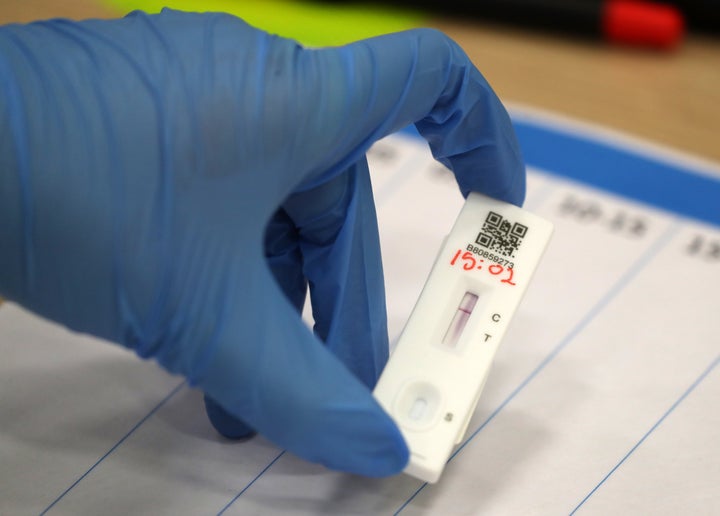
Close contacts of people with Covid-19 will be spared the need for any self-isolation under new government plans to give them a week’s supply of daily rapid home tests.
The radical proposal, dubbed “a game changer” by one insider, is being piloted across England in workplaces, schools and some universities with the aim of rolling it out more widely from the New Year.
Under the plan, those identified as having had close contact with people who tested positive for coronavirus will not have to quarantine as long as they test negative every day for seven days.
It is understood that they will be sent a box of seven lateral flow devices, which give results within as little as 30 minutes, to use daily at home.
If they test negative in the morning, they will be free to go about their daily life. If they test positive, they are sent a free PCR test, which has a much greater sensitivity. A further positive test would result in 14 day self isolation.
Lateral flow tests have faced criticism in recent weeks because studies show that in Liverpool they failed to pick up half of Covid cases and 30% of people with high viral loads.
But ministers are determined to press ahead with their widespread use.
Just a fraction of the public are currently following the full guidance to stay at home for 14 days if they have been in contact with someone with the virus.
Wales this week decided to cut the 14 day period to just 10 days in a bid to improve compliance with the rules, but England has yet to follow suit.
The new zero-quarantine proposal was highlighted in the NHS Test and Trace business plan published on Thursday, with fresh targets to improve its performance by March.
The service, which has faced heavy criticism, pointed to new research by government scientists that suggested it had already had a significant impact on reducing the R rate for the virus and its fresh plans could cut that number by a further 0.8 in Covid hot-spot areas.
It unveiled new targets, including reaching 90% of cases and 85% of the contacts they name by the end of January, and reaching 80% of contacts within 72 hours by March.
The business plan said “increased use of rapid tests may allow for even faster
turnaround time in future, and those traced through the app are reached even faster.”
Test and Trace said that in October “testing, tracing and self-isolation (on symptom onset or following contact by Test and Trace) reduced the R rate by around 0.3–0.6, compared to a scenario with only social distancing, restrictions and no self-isolation”.
“When we have implemented the commitments in this document, which we expect to by March, we estimate the R reduction could increase to around 0.5–0.7.2 In high-prevalence areas that roll out rapid community testing, it could further reduce the local R number by around 0.6–0.8.”
The latest document also sets out Test and Trace will extend its work with local council leaders, backed by further funding worth potentially more than £200 million per month, in addition to over £780 million already been committed to local authorities.
It also pointed to new Apple data showing that the NHS Covid-19 App had been one of the most downloaded apps of 2020, second to Zoom but ahead of TikTok.
From Thursday, the app can be used for the first time to allow a £500 self-isolation payment.
The business plan proposes to “increase adoption and use of the app to multiply effects of all interventions – testing, contact tracing, self-isolation and outbreak management”.
The latest weekly figures for Test and Trace showed a marked improvement in both its close contact tracing rate and its test turnaround times.
The proportion of “close contacts” of people with Covid in England reached was 85.7% for the week ending December 2.
That’s only the second time since its launch in May that the system has passed 80%, the target that government scientists say is needed to make the whole service viable in stemming the spread of the virus.
